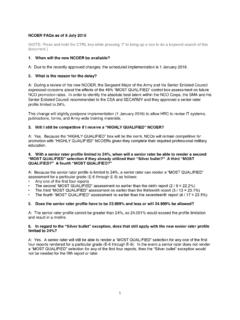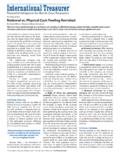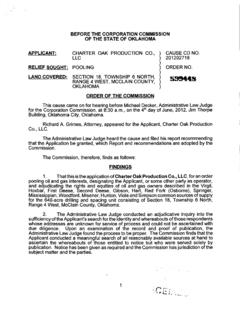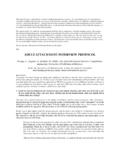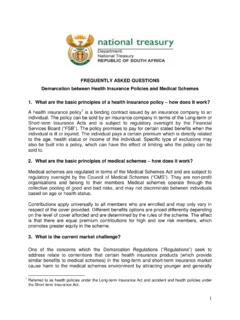Transcription of National Dairy Plan Phase I - nddb.coop
1 National Dairy Plan Phase I Guidelines on Village Milk Procurement Systems through Dairy Cooperatives Project Implementation Plan: Volume VI A Project Management Unit (located in NDDB) i Table of Contents Table of Contents .. i Foreword .. 1 1. Introduction ..3 What is this Manual and why it is needed?.. 3 Whom is this Manual for? .. 3 Milk pooling .. 3 Village Based Milk Procurement System -an overview .. 5 2. Institutional arrangsement for VBMPS implementation ..8 Participants in the VBMPS programme .. 8 Functions of the participants of VBMPS .. 8 Identification/ recruitment of Manpower .. 9 3. Milk Procurement operations .. 11 Milk pooling ..11 Importance of milk pooling under NDP I ..11 Identification of potential area ..11 Area of operation.
2 12 Organisation of primary Dairy cooperatives ..12 Organization and registration of society ..13 4. Standard Operating Procedures for putting in place infrastructure and start of operations under VBMPS .. 19 Different Components of VBMPS ..19 Understanding targets for each year and ensuring that they are met ..19 Milk Procurement operations and testing ..20 Procurement of equipment/services ..23 Procurement Management practices ..23 Fund flow Mechanism and financial management ..23 ii Initiating milk Collection ..23 5. Capacity Building related to VBMPS Sub-Plan .. 27 Training modules included under the Sub-plan ..27 Educating cooperative societies members and staff ..29 Other measures for Awareness creation among milk producer members ..30 6. Key rules for milk procurement to be followed under VBMPS implementation.
3 31 Fairness and Transparency in Milk Collection ..31 Providing equal opportunity to all milk Accountability ..32 Ensuring value of milk supplied ..32 Information Disclosure with awareness creation ..32 Grievance Redressal Mechanism (GRM) ..34 7. Project Management, Monitoring and evaluation .. 35 Why is monitoring required? ..35 The Project Management Cell ..35 Parameters to be monitored ..36 Monitoring & Evaluation ..36 Annex I: List of items/equipment at different locations under VBMPS .. 39 Annex II: Testing of milk at DCS/BMC DCS level .. 43 Annex III : Procedure for submission of complaints and their Redressal .. 45 Annex IV: Roles & responsibilities of PMC members for the Sub-project .. 47 iii Abbreviations AI : Artificial Insemination AMCU : Automatic Milk Collection Unit BIS : Bureau of Indian Standards BMC : Bulk Milk Cooler BOD : Board of Directors CC : Chilling Centre CEO : Chief Executive Officer CMP : Clean Milk Production DCS : Dairy Co-operative Society DPMCU : Data Processing Milk Collection Units EIA : End Implementing Agency ESMF : Environment and Social Management Framework EMT : Electronic Milko Tester EPM EWS : : Enterprise Project Management Electronic Weighing Scale FD : Fodder Development FSSA GRM : : Food Safety and Standards Act Grievance Redressal Mechanism GRO : Grievance Redressal Officer IB : Institution Building LPD : Litres per day MBRT : Methylene Blue Reduction Test MIS : Management Information System MCM.
4 Management Committee Member MT : Metric Tonnes NDDB : National Dairy Development Board NDP : National Dairy Plan PC : Project Coordinator PFA : Prevention of Food Adulteration PMC : Project Management Cell QA : Quality Assurance RBP : Ration Balancing Programme SMP : Skimmed Milk Powder SNF : Solids Not Fat SWOT : Strength Weakness Opportunity Threat TkgPD : Thousand kilograms per day TS VBMPS : : Total solids Village Based Milk Procurement System iv 1 Foreword Some 70 million rural households are engaged in milk production, the majority of them being small and marginal farmers and landless. Dairy cooperatives ensure inclusiveness and livelihoods especially for women. Under the Phase I of the National Dairy Plan, measures taken to help increase the productivity of milch animals through scientific breeding and nutrition would result in increased milk production which would meet the rapidly growing demand of milk.
5 It is desirable that the cooperative sector retains the present 50 per cent share of the marketable surplus handled by the organized sector. To achieve this it would therefore be essential to ensure that this increased milk quantity is duly tapped by the Dairy cooperatives by providing them a fair, transparent and assuring quality milk procurement system there by providing the rural milk producers greater access to the organized milk processing sector. The strengthening of the Village based Milk Procurement Systems in Dairy cooperatives would be carried out through: Expansion and setting up of village based milk procurement systems to collect milk in fair and transparent manner and ensure timely payments Strengthen Dairy cooperatives to put in place village level infrastructure for milk weighing, testing, collection and milk cooling Provide support for creating institutional structures and training This manual has been prepared primarily for the Dairy cooperatives who would be implementing the Sub-Project Plans under Village based Milk Procurement Systems at field level.
6 This would help equip the project staff with an understanding 2 of how to go about in implementation of the activities, and equip them with essential information to implement the project effectively and in a comprehensive manner. The manual has specific Standard Operating Procedures (SOP) and guidelines for implementing a Village based Milk Procurement system. It also describes the objectives, Standard Operating Procedures (SOP) and guidelines for each activity, management and monitoring mechanism, and key institutional arrangements necessary for implementing a Village based Milk Procurement System. It is expected that this Manual for the Village based Milk Procurement Systems will be a useful guide for the people directly or indirectly involved with the project. 3 1.
7 Introduction What is this Manual and why it is needed? A manual is a reference book, which presents information that is necessary for operating or implementing a particular system, project etc. It is written to give sound technical guidance to the people implementing a project. This Manual is expected to provide relevant guidelines to the key operations of the activity so as to achieve the desired targets with quality output. It explains as to who would be implementing and monitoring the activity, the processes involved, their importance, the Standard Operating Procedures (SOPs) to be followed and the support required. It defines roles and responsibilities of all those involved in the implementation of the activity. It is needed since it becomes the guiding document according to which the project should be implemented.
8 Whom is this Manual for? This Manual is for all those involved in planning , monitoring and implementation of the Village Based Milk Procurement Systems plans as per approved Sub-Project Plans. It is primarily for the End Implementing Agencies (EIAs), the Milk Unions who have proposed to take up the VBMPS activity in their area of operation and also for those directly or indirectly associated with the activity. Milk pooling Milk is defined as the normal mammary secretion derived from complete milking of a healthy animal without addition or extraction. It is made of several constituents which can be broadly classified under two categories: water and total 4 solids. Further total solids have two components: fat and solids not fat (SNF). In the Indian context, pooling of milk provides a source of livelihood for millions of rural producers and since many producers with little surplus live in far-off rural areas, it is important to pool their small quantities through village level institutions and provide sustainable market access to them.
9 Milk pooling is a process that includes all the activities starting from milk production at household level to its receipt at the Dairy plant. Milk pooling not only takes care of handling of milk, but also encompasses the activities of various institutions and people involved directly or indirectly in milk business. Milk producers come together and form a village Dairy cooperative society (DCS) with the support of Milk Union and start supplying the surplus milk to the DCS, after retaining milk for their household consumption. The major operations of a DCS are hygienic milk collection and providing input services. Milk collection involves reception, testing, local and sample milk sale, dispatch of milk to the Milk Union, payment and accounts keeping. Input services include animal health coverage, artificial insemination, supply of cattle feed, mineral mixture and other feed supplements, fodder seeds, providing extension services to producer members including propagation of Clean milk production practices.
10 The major functions of the Milk Union are to procure, process and market milk and milk products, provide inputs such as cattle feed, veterinary services, extension services, etc. to the producer members through the DCS and arrange for training and education of management committee members, DCS 5 staff, milk producer members, Board members, officials and Staff of the Milk Union. Village Based Milk Procurement System -an overview There is a need for Village based milk procurement systems for weighing, testing quality of milk received and making payment to milk producers due to the following developments: Efforts to increase milk production through an increase in productivity would result in a growing marketable milk surplus. It will be necessary to support this effort by providing milk producers better opportunities for sale of surplus milk by expanding village milk procurement systems that facilitate fair and transparent transactions.



